#jawless
Text
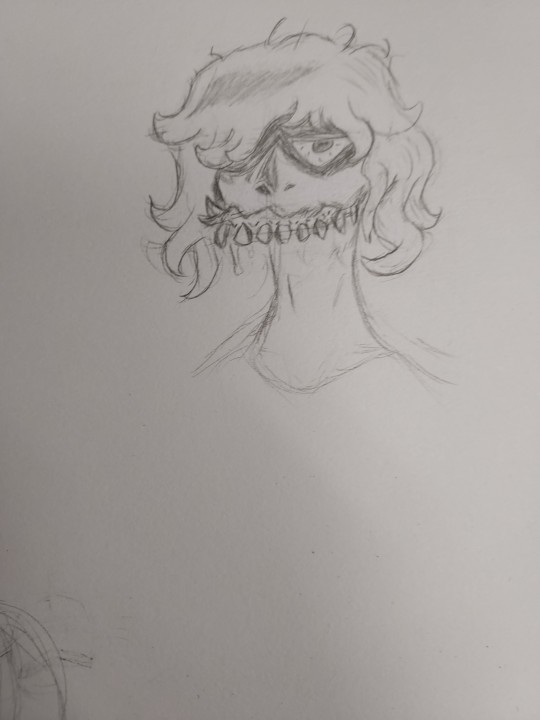
Feelin a wee jawless recently
9 notes
·
View notes
Text
Fallout Warriors main characters
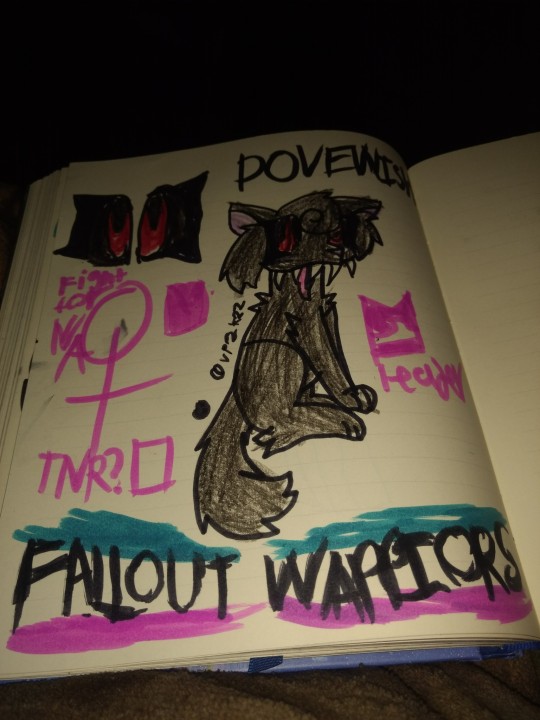


( All three cats were designed by me )
#warrior cats#fallout#crossover#Fallout X Warrior Cats crossover#designs#character designs#Windclan#Dovewish#Cherrystar#Cherrysong#Sparkhowl#jawless#no jaw#missing jaw
2 notes
·
View notes
Note
Which prehistoric creature has the most Just Some Guy energy?
Sacabambaspis

12K notes
·
View notes
Text

(Not super accurate) Sacabambesties
#art#digital art#illustration#sacabambaspis#jawless fish#Ordovician#paleo art#palaeoblr#paleoillustration#feesh#fish
3K notes
·
View notes
Photo


hahagh wow detective show drawings
#SCREAMIGNRG!!!!!!!!!!!!#columbo#lieutenant columbo#adrian carsini#any old port in a storm#birbwelldraws#puts the lieutenant in my pocket#ive. started properly watching the episodes in order#ive been so so so normal all day.#also do you know how hard it is to draw carsini in a style that isnt Realistic#looks at ten million donald pleasence images#him and his jawless swag <3
2K notes
·
View notes
Text


The legendary jawless fish irl in Helsinki. They also had googly eyes and a mustache.
499 notes
·
View notes
Text
What Is and Isn't a Fish: an Essay and Guide by Fishyfishyfishtimes
A simplified list of the animals I discuss can be found here!
Hello folks! I created this post to have a kind of definitive essay/explanation of what is and isn't a "fish", starting with defining the term and going over animals that fit and don't fit the bill. As other fishblr artists, writers and educators must know too well, some people are confused about where this term begins and ends, mistaking other aquatic animals for fish. I have my fair share of arthropods and cnidarians as fish fact requests in my own askbox, heck, some years back a friend of mine asked me if clams were fish. The event that finally made me decide to write this was someone requesting that a fish-only account draw a crustacean, pondering to themselves if they count as fish.
I don't want to hold it against these people. It's impossible to know something when you've never been taught! So that's what I'm here to do, hopefully achieving a pretty correct and universal view ^^' If I make any mistakes please correct me. I'm learning all the same as everyone else is.
Definition of fish
Immediately, we run into a bit of a problem with the definition of fish. See, what the term "fish" means has fluctuated for centuries! For a long time, pretty much any animal that lived in water was a "fish" — I say "pretty much any" instead of "every" animal because for a long time sessile animals like sponges or corals were thought to be plants. This is why we have such remnants in our language like shellFISH, starFISH and jellyFISH, they lived in water so they were called such!
Occasionally these definitions would be changed for cultural convenience too. Many Christian churches take part in Lent, and in the Catholic church red and white meat is forbidden on Fridays and Ash Wednesday. In the Middle Ages, in my own country, Finland, this abstinence of red and white meat could last up to 140 days! To make fasting easier, many animals were labelled fish for convenience so they could be eaten as well. These newfound "fish" included seals, beavers and swans, pretty much just anything that was aquatic or semiaquatic in nature.
Nowadays just going off of looks or behaviour won't do, though. There has been much more of an effort to define fishes coherently based on their anatomy and phylogeny, which is great! Problem is, that's easier said than done: fishes are an extremely diverse group, and uh.. not really a single group, either. I'll show you:

As you can see from this heavily simplified phylogenic tree, fishes are not a singular group like, say, mammals are! The animals that we group under "fish" are actually a part of several distinct lineages of animals, some more closely related to us than each other. Heck, tetrapods, which include amphibians, reptiles*, and mammals, are fish themselves! Phylogenetically speaking. Our ancestors were lobe-finned fish, and, well, you never stop being the previous taxon even when you evolve into something else. If you try to exclude tetrapods, no such unified group as "fish" exists. Still, when discussing fish, we tend to want to avoid talking about every vertebrate ever and instead focus on the very specific aquatic ones we mean when we say "fish". This is why many definitions of the term "fish" still exclude tetrapods, even if we share a common fishy ancestor. "Fish" describes more of a lifeform than it does a clade, much like the term "worm"!
(*birds are reptiles! This could be a whole post in and of itself, but I'm not here to write about that. Someone else has most likely taken up the task!)
Hooray, it's definition time! As stated previously, fishes are an extremely diverse group of thousands of species, and what terms might apply to the Atlantic cod may not apply to the yellowfin tuna or giant mudskipper, let alone a Pacific lamprey! Encyclopedia.com defines a fish as "an ectothermic chordate that lives primarily in water and possesses a cranium*, gills that are useful virtually throughout life, and appendages (if present) in the form of fins". Encyclopedia Britannica notes that "the term fish is applied to a variety of vertebrates of several evolutionary lines", instead highlighting five classes. These five classes are left partly unspecified, but ones that are mentioned are jawless fish, cartilaginous fish and bony fish (which still includes tetrapods, however), and the two classes left can be assumed to be two classes of extinct fish. Wikipedia defines a fish as "an aquatic, craniate**, gill-bearing animal that lacks limbs with digits". Tim M. Berra, an academy professor and ichtyologist, defines fish as "poikilothermic***, aquatic chordate with appendages (when present) developed as fins, whose chief respiratory organs are gills and whose body is usually covered with scales".
(*cranium=upper part of the skull **craniate=an animal with a skull ***poikilothermic=an animal whose internal temperature varies considerably)
From these more or less detailed definitions we can gather many defining features for fish: a cranium-having chordate, primarily aquatic, gill-bearing and uses gills as their main respiratory organ, lacking any limbs with digits, instead having their limbs be in paired and unpaired fins when present. Most fish are also ectothermic, meaning their body temperature is determined by their environment, but some can heat up parts of their body or their entire body in the case of the opah. Most fish also have scales, but not all, just like how most fish are fully aquatic, but some like lungfish or mudskippers can spend considerable time out of the water. Such is the way of these magnificent and diverse animals!
Finally, with all this out of the way, we can get into...
What is a fish!
Here, I will be detailing animals that are fish! Well, at least the broadest strokes; there are more than 30 000 fish species and if I listed them all we'd be here all life. I shall instead go over the major classes and list, in short, some groups that belong in them.
Jawless fish (Superclass Cyclostomi)
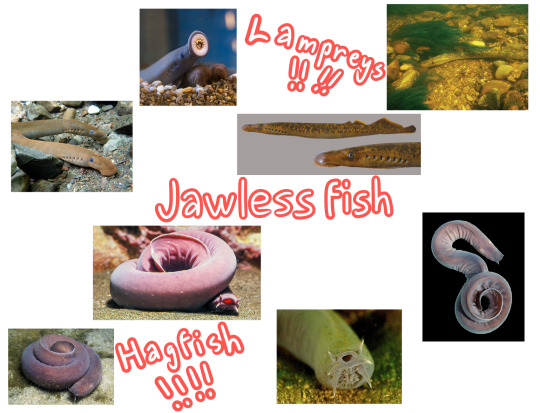
Jawless fish are often a topic of debate, especially in matters of their relation to each other and to jawed vertebrates. Evidence seems to point to hagfish and lampreys being closest related to one another and to lampreys being more closely related to jawed vertebrates than to hagfish (which would make hagfish craniates but not vertebrates). In the phylogeny tree above I decided to portray hagfish and lampreys as a monophyletic group, as molecular studies and microRNA analysis seems to point to a monophylegic superclass. Please note that this could go either way, though.
Jawless fish is a group containing two extant fishes, hagfish (class Myxini) and lampreys (order Petromyzontiformes)! Jawless fish are more "primitive" than other groups, for example both lack true vertebrae and scales. Still, they both have craniums and gills and they are aquatic, and so they have earned their place among fish!
Cartilaginous fish (class Chondrichthyes)
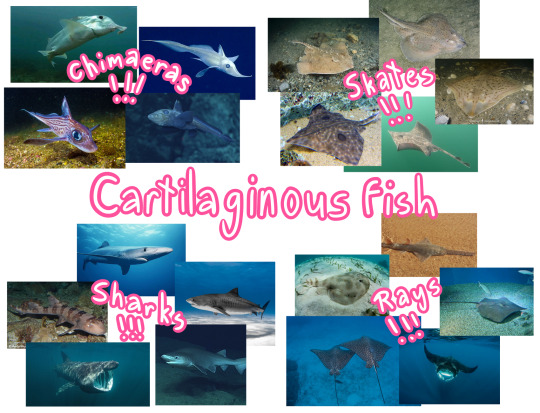
Surprisingly, I've found that this group has a lot of confusion surrounding it. I have received many a request confirming if sharks are fish, or asking if I'd cover a shark "even if it's not a fish". So I'll say it now: good news, sharks are indeed fish! So are their cousins, rays, skates and chimaeras, also known as ghost sharks! All of these fish have a primarily cartilaginous skeleton, tooth-like dermal denticles and lack gill covers and a swim bladder. Out of all the sharks, I also want to highlight that the whale shark, despite its confusing name, is a shark and not a whale. So, it is a fish!
Ray-finned fish (class Actinopterygii)
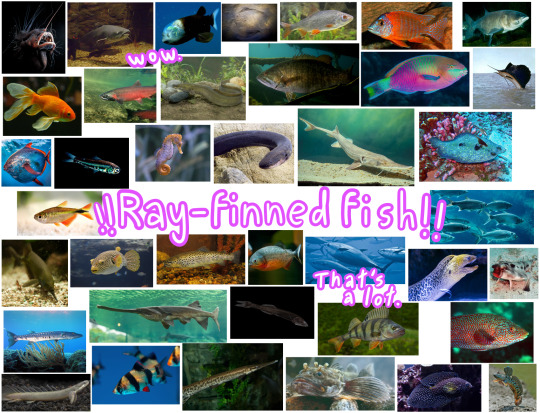
Name any fish, and there's a 96% chance the species name you said belongs to a ray-finned fish. Unless, like, you really like sharks. But this isn't about them.
Ray-finned fish are the biggest group of fish and incredibly diverse! It has your seahorse, your pufferfish, your bass, your tuna, your anglerfish, your clownfish, your salmon, your sturgeon, your lanternfish, your perch, your oarfish, your gar, your sardine, your moray eel... and this is only a tiny, tiny fraction of the groups that belong to this class! Defining features of ray-finned fish are that they tend to have a swim bladder and a bony skeleton (some exceptions though. Sturgeons, for one, have evolved a cartilaginous skeleton but they're still ray-finned fish). The largest group of ray-fins, the teleosts, also have leptoid scales, which are thinner and more flexible and grow with growth rings.
I want to bring special attention to some members of the ray-finned fish which tend to have a lot of confusion surrounding them and their heritage: eels and seahorses. Many people think these two are not fish due to their strange anatomy, like lack of scales or (many) fins and their elongated bodies, and I wouldn't blame them! Seahorses belong to family Syngnathidae, which also includes seadragons and pipefish. Eels, meanwhile, make up the order Anguilliformes. All of these long friends of ours are fish!
Lobe-finned fish (clade Sarcopterygii)

I shall merely focus on the fishy fishy fish individuals of this class, which excludes tetrapods. Lobe-finned fish house the two extant species of coelacanths, and six extant species of lungfish! These fish are bony and their fins are placed at the tips of fleshy, lobelike stalks, resembling the limbs of tetrapods. It is thought that the common ancestor of coelacanths and lungfish and tetrapods had similar structures that then became the four limbs the members of our clade typically have. Coelacanths and lungfish are wonderful fishes and deserve a lot of love and respect, not only because they're our closest cousins but because they're unique and we have so much to learn about them!
So, these are the fishes! There are also extinct groups of fish, namely class Placodermi (armoured fish) and class Acanthodii (spiny "sharks"). I'm moreso an extant fish account however, and so I shall move onto...
What isn't a fish?
Now we get into the real meat of this post. Without further ado, here are some aquatic friends of ours that can be mixed up with fish very often!
Crustaceans (subphylum Crustacea)
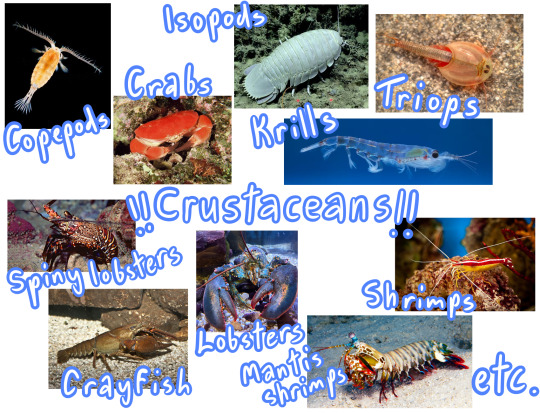
Many of our hard-shelled many-legged friends belong here! Crabs, lobsters, crayfish, shrimp, krill, isopods, triops, barnacles, copepods, you name it! Even though many crustaceans are aquatic or semiaquatic and have gills, you'll find that they're invertebrates that lack an internal skeleton (so no cranium, not even vertebrae)! We still love them though!
Mollusks (phylum Mollusca)

Creatures both soft and hard-shelled! Cephalopods like octopuses, squid, nautilus and cuttlefish, bivalves like clams, mussels, oysters or scallops, gastropods like sea slugs and snails and chitons go here! These friends of ours are also aquatic and have gills, some even have the suffix -fish (cephalopods used to be called inkfish, even!), but their lack of an endoskeleton is even more obvious than the crustaceans'. They're invertebrates, and therefore not fish!
Chelicerates (subphylum Chelicerata)
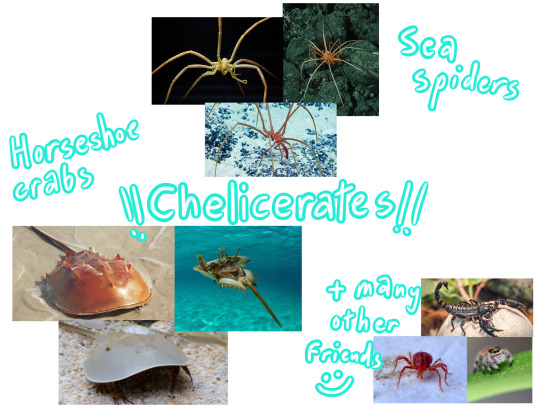
This group has many animals that are very hard to mistake for fish, namely spiders and scorpions, but horseshoe crabs and sea spiders are two groups of extant marine chelicerates! Both groups are aquatic, and horseshoe crabs have gills. However, they're both invertebrates, lacking a cranium or vertebrae. Other aquatic chelicerates exist, but they're usually very small, like water mites.
Cnidarians (phylum Cnidaria)

This phylum has the sessile corals and sea anemones and the usually more mobile jellyfish and siphonophores (includes the infamous Portugese man o' war!). I imagine corals and sea anemones are mistaken for fish less due to their sessile nature, but they're good to bring up nevertheless. None of these animals have a backbone, or, any bones really. They lack gills, they lack fins, they even lack the bilateral shape of fish. Jellyfish, despite the name, are indeed not fish! Some people suggest the name sea jellies be used for them instead, and I think it's much cuter.
Echinoderms (phylum Echinodermata)

Animals like starfish, sea urchins, brittle stars, sand dollars, sea cucumbers and feather stars go here. It seems that this pesky "-fish" -suffix is hard to shake off, as now we have the starfish. Once again, all of these slow-moving bottom-dwelling friends of ours are invertebrates, as they lack vertebrae or a cranium. Interestingly though, they are among our closest invertebrate relatives! So we ought to give them some props for that. I also want to mention that starfish can also be called sea stars, which ought to lessen confusion about their being too.
Comb jellies (phylum Ctenophora)

Comb jellies look a lot like jellyfish, but they belong in their own unique phylum! They have the same deal going on; they are invertebrates, they lack gills, they lack a cranium, they are simply aquatic.
Lancelets (subphylum Cephalocordata) and tunicates (subphylum Tunicata)
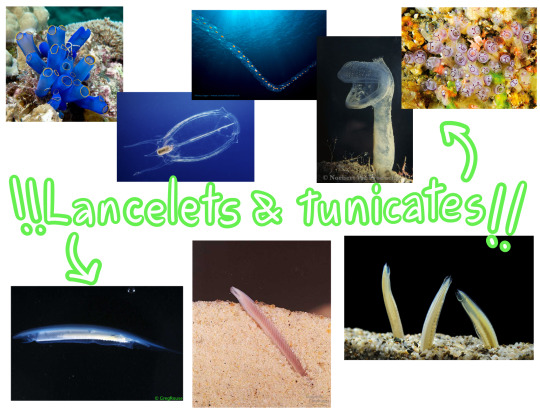
A double feature, because I wanted to save space didn't want these guys to be all alone! Lancelets and Tunicates, like sea squirts and salps, are chordates, which you can find in the phylogenic tree I drew all the way in the definitions section. They share many a feature with vertebrates, like a bilateral bodyplan, a notochord at some stage of life and a post-anal tail, but I'm afraid they're still not fish. They lack a cranium and their notochord does not develop into a vertebral column! Sorry friends, you tried. We can still hang out at the chordate convention.
Annelids (phylum Annelida)

The infamous bobbit worm, bone-eating worms, sea mice, giant tube worms, feather duster worms, spoon worms, bristleworms in general, leeches... many, many worms go here! Pretty self-explanatory: they are invertebrates, even when they live in water. They're extremely cool invertebrates too! I suggest taking a look at some of them, there's many interesting species.
Flatworms (phylum Platyhelminthes)

Flatworms are another very diverse group of worms, having many species both terrestrial and aquatic, however mostly I want to put attention into the free-swimming marine flatworms. They may swim beautifully (and fence with grace), but they are nevertheless invertebrates! Flatworms can live a variety of different lifestyles, from predators to parasites.
Amphibians (class Amphibia)

We've made it into vertebrates now! Amphibians include frogs, salamanders, and caecilians. While they have limbs with digits in their adulthood*, they can be easily confused for fish in their larval stages! This is no surprise, as they use gills to breathe underwater and tadpoles lack any limbs at all for a while. Many amphibians later transition into a terrestrial or semiaquatic way of life and lose their gills, not to mention gain their digit-having limbs.
(*excluding caecilians)
...Well, many amphibians do this, but not all. It's important to mention there are also species of aquatic salamanders which can bear great resemblance to fish with their elongated bodies! Amphiumas, which are sometimes mistakenly called "conger eels" (which is an actual species of fish), are aquatic salamanders with small residual limbs and both working gills and lungs. Giant salamanders and mudpuppies/waterdogs have lungs and gills as well, and lead an aquatic lifestyle — olms are close relatives of mudpuppies. Sirens, meanwhile, lack hind limbs and only have small front limbs, along with retaining their gills in adulthood. Among aquatic salamanders I also want to bring up one most often talked about species: the axolotl! They remain in their larval form, have external gills and lead an aquatic lifestyle. It can be hard to tell with aquatic salamanders sometimes, but these friends of ours are amphibians and not fish, even if they've rejected the land life.
Caecilians are a bit less known overall, but they can also cause a lot of confusion due to their long, limbless body. While most caecilians live underground, some are aquatic in nature, and can therefore be mistaken for fish! However, caecilians breathe via the use of their lungs and through the skin and don't have any gills at all.
Reptiles (class Reptilia)

Most commonly mistaken for fish in this group are sea snakes, sea kraits and water snakes, sea turtles, turtles, penguins, and other (semi)aquatic birds. Sea snakes and water snakes bear a very strong resemblance to eels, but they are indeed just snakes adapted to an aquatic or a semiaquatic lifestyle! The same goes for sea turtles, turtles overall, and penguins. They all need to breathe air and they lack fins, even if their flippers, webbed feet and built-in paddles may look like fins! They also have wholly different types of scales (or feathers!!) than what fish have, even if they share the feature. I assume that other aquatic reptiles, like the marine iguana and crocodilians are better read as reptiles thanks to their limbs with digits, but I want to give them a reptile shoutout anyway. They’re aquatic or semiaquatic, but they are air-breathers and fin-lackers all the same!
I also want to mention one specific extinct group of reptiles, ichtyosaurs! These marine reptiles were rather shark- or dolphin-like in appearance, which is actually a really good example of convergent evolution! Like all other reptiles, they also needed to breathe air and they had... erm... well, I'm not sure if I can call the bones in their flippers digits, but, that's what they used to be, so...? They were cool reptiles and among my favourites! There were many other aquatic reptiles too, but I will only mention just the ones now. A paleontology account would be better-suited to list you allll the marine reptiles.
Mammals (class Mammalia)

Our home class! Some of the aquatic friends we have in this class include whales like baleen and beaked whales, dolphins (orcas go here), porpoises, belugas, narwhals and sperm whales, pinnipeds like seals, sea lions, walruses, and sirenians like manatees, (occasionally known as sea cows) and dugongs! We also have some semiaquatic buddies like hippopotamids, otters, beavers and platypuses! Whales and pinnipeds especially often cause a lot of confusion due to their very streamlined, fishy appearance. They are, however, air breathers that feed their young with milk (some dolphin calves are even born with some hair), and their ancestors were land mammals! The same goes for pinnipeds and sirenians too. True seals, fur seals and sea lions still have fur even! Hippos, otters, beavers and platypuses are a bit more obvious as mammals with their fur and.. distinct air-breathing.. but I wanted to mention them anyway. Their adaptations to aquatic life are just one example of how fascinating evolution can be!
And here we are! A hopefully comprehensive list of fishes and non-fishes, beginning with the ever-shifting story of the term "fish", phylogeny, and why some animals are called fish when they really aren't. I hope you have found useful and interesting information in this post, and perhaps learned something new! I bid you a farewell! :D
#fish guide#fish essay#fish#fish facts#fishfact#marine biology#biology#zoology#long post#jawless fish#cartilaginous fish#ray-finned fish#lobe-finned fish
255 notes
·
View notes
Text

European river lamprey (Lampetra fluviatilis)
By: Heather Angel
From: The Complete Encyclopedia of the Animal World
1980
#lamprey#jawless fish#fish#1980#1980s#Heather Angel#The Complete Encyclopedia of the Animal World (1980)
462 notes
·
View notes
Text

extra credit art project for my vertebrates class!
145 notes
·
View notes
Text
Sacabambaspis says yuri rights
idea from @/aster10s_ on Twitter

#paleoart#paleontology#digital art#artists on tumblr#digital artwork#palaeoart#digital illustration#id in alt text#sciart#jawless fish#sacabambaspis#yuri#sapphic#wlw
98 notes
·
View notes
Text
Wet Beast Wednesday: lampreys
Welcome to the first Wet Beast Wednesday covering an agnathan. What is that, you may ask? Why it means jawless fish. But they aren't really fish even though they live underwater and have gills. Taxonomy strikes again. Anyway, agnathans are more closely related to each other than to any bony or cartilaginous fish and they may represent an early stage in the evolution of vertebrates. There are only two living groups of agnathans: the hagfish (which I'll get to sometime) and the lampreys.

(Image: a pair of lampreys, one resting on rocky sediment and one swimming. They are long, green, slender fish-like animals with only dorsal and tail fins, several holes on the sides of the heads, large eyes, and no visible jaws. End ID)
Lampreys are sometimes mistakenly called eels due to their long and slender bodies. All 38 known species are elongated, scaleless animals with a funnel-shaped, jawless mouth called the buccal tunnel or buccal cavity. They do not have paired fins, only two dorsal fins and a tail fin. The head has one nostril on the top and seven pores on each side that allow water flowing over the gills to exit the body, similar to the gill slits of sharks. Adult lampreys have well-developed eyes while the larvae have weak eyes covered with skin. In addition, they have two simple parietal eyes, making lampreys the only four-eyes vertebrates. The mouth acts like a suction cup and is used to suction onto rocks or other animals. Inside the mouth is a rasping tongue that is used to scrape at food. You may think that all lampreys are parasites that feed on blood. This isn't the case, only 18 species are predatory and some of those are thought to be exclusively scavengers. The rest of the species either feed on algae by scraping it from rocks or never eat as adults, subsisting entirely on energy stores gained as a larva. The last common ancestor of all living lampreys (which is estimated to have either lived during the Jurassic or Cretaceous periods) is believed to have fed on blood as an adult. Lampreys are believed to be part of a sister group to all jawed vertebrates and are considered the most basal (closest to the ancestral form) of all vertebrates. They have cartilaginous skeletons and primitive, cartilaginous structures called arcualia instead of vertebrae. Lampreys are some of the most efficient swimmers and swim using a different method to other fish. Instead of using their fins to push themselves forward, lampreys use their fins to generate low-pressure zones in the water around their bodies to pull themselves forward. The pressure equalizing is what does most of the work of moving the lamprey, allowing them to move while expending little energy. In shallow water, the lampreys can use their suctioning abilities to crawl forward and are able to crawl over obstacles like rocks or ramps. Most lampreys are exclusively freshwater dwellers, but 9 species (all of which are carnivorous) live mostly in saltwater (though they can also live in large bodies of freshwater like lakes) and return to freshwater to breed. Of the 38 species of lamprey, only 5 species (in two families) live in the southern hemisphere. The remaining species are all members of the family Petromyzontidae and live in the northern hemisphere. No species lives in the tropics, seemingly because their larvae are not heat-tolerant.

(Image: a lamprey's mouth seen from below. It round and conical and ringed with multiple rows of sharp, yellow teeth. End ID)
The lamprey life cycle of lampreys starts in streams which adults will often migrate to reach. Adults will create nests called redds by using their suction to move rocks and expose the sediment below. Males use pheromones to attract females and the two intertwine with each other. The male presses a patch of heat-producing tissue to stimulate the female to release her eggs. The male fertilizes the eggs as they emerge. All lamprey species are semelparous, meaning they die after mating. In the case of lampreys that don't eat as adults, their adult forms exist only to mate and die, much like mayflies and some species of moth. Other species that can eat as adults spend up to 4 years feeding and growing before they mate. Larvae are called ammocoetes and once hatched, they are carried downstream to eventually settle on soft sediment. There, they burrow their rear halves into the sediment with their heads exposed. In this stage, they are filter feeders who need running water to bring plankton, algae, and bits of organic detritus to their mouths. Instead of the disc-like mouths of adult lampreys, ammocoete mouths are fleshy hood that enclose a sieve-like structures that filters particles out of the water. The lifestyle of ammocoetes is very similar to that of lancelets, which are extremely primitive chordates believed to represent some of the earliest stages of chordate evolution. Ammocoetes require water high in nutrients to survive as they capture only a small amount of water and therefore food. Ammocoetes are photosensitive, allowing them to change color in response to ambient light (becoming dark in the day and ale at night) and detect if they are properly buried. Depending on species, ammocoetes can grow between 10 and 20 cm (4-8 in) in length and they can spend between 1 and 10 years in this state. Metamorphosis to the adult form can last up to 4 months and lampreys do not feed during this process. Metamorphosis is synchronized between members of the same species.

(Image: three ammocoetes buried in sand with only their heads exposed. They are similar to the adults but pink, with small, barely-visible eyes, and their mouth are flexible and look like fleshy flaps. End ID)
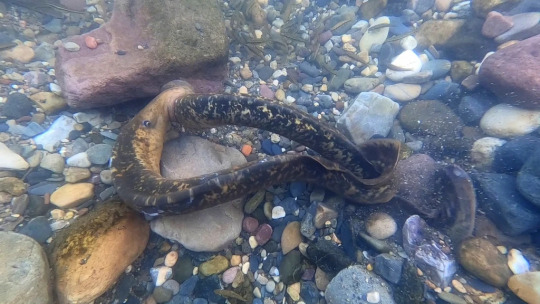
(Image: two lampreys mating. they are coiled onto each other with one using its mouth to suction onto the midsection of the other. They are on a rocky stream bed. End ID)
Lampreys are used in science for several purposes. They are often used as a model organism when attempting to understand the biology of early vertebrates and extinct agnathans. They are also studied quite a bit for their nervous systems. Lamprey brains are very simple and likely represent very early stages of brain development in vertebrates. In addition, they are useful for studies of the transmission of electrical impulses between nerve cells due to their axons (the part of a nerve cell that conducts electricity away from the main body and to other nerve cells), which are large enough for microinjectors to inject test substances into them. Lampreys are capable of fully recovering from having their spinal cords severed, something that is of great interest to surgeons and neurologists. Lampreys have been used as a food source in many cultures around the world. Some species have toxic mucus and blood, requiring them to be cleaned before eating. Historically lampreys have been kept in captivity for use in food as well as other purposes. There are records of people being executed or tortured by being thrown into a pit of carnivorous lampreys. In the wld, carnivorous lampreys generally don't attack humans unless they are starving. In addition, there is a record of one Roman statesman named Lucius Licinius Crassus being scolded for being more upset over the death of his pet lamprey than over the deaths of any of his wives. Unfortunately, the thing a lot of people know lampreys for today is the sea lamprey (Petromyzon marinus) being an invasive species in the great lakes of North America. They have no natural predators in the lakes and feed on a lot of ecologically and commercially important species. Due to their lack of predators, multiple methods are used to try to reduce their numbers and keep them from harming the ecosystem. These include using barriers to keep the adults from migrating upstream to breed, release of targeted poisons called lampricides, and releasing sterilized males into the lakes to mate with the females.

(Image: two sea lampreys suctioned onto a fish. The fish is green and covered with black dots. The two lampreys are suctioned next to each other on the top of the fish's head. Their bodies are dangling off of the fish in different directions. End ID)
#wet beast wednesday#lamprey#sea lamprey#agnatha#agnathan#jawless fish#fish#fishblr#marine biology#freshwater biology#ecology#zoology#animal facts#informative#image described
79 notes
·
View notes
Text
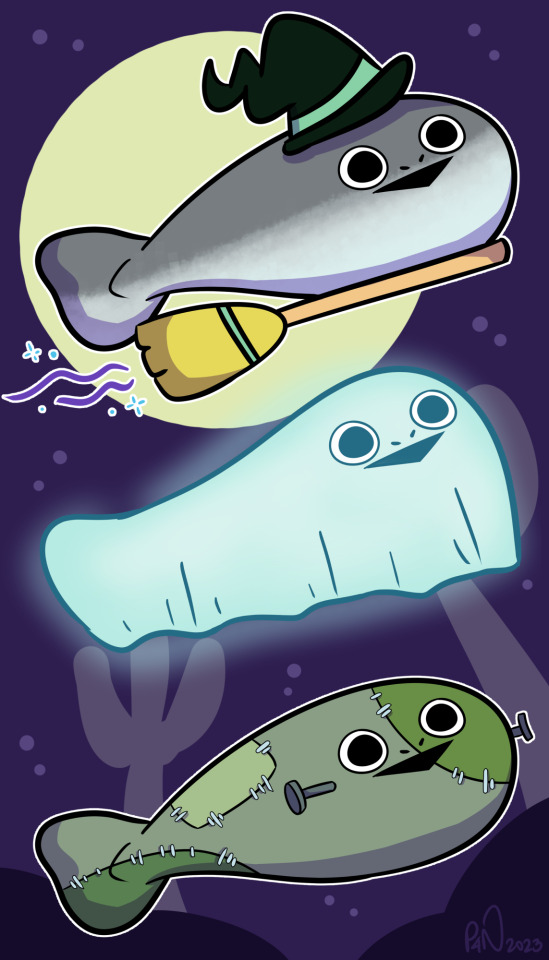
SACA-BOO-MBASPIS
157 notes
·
View notes
Text


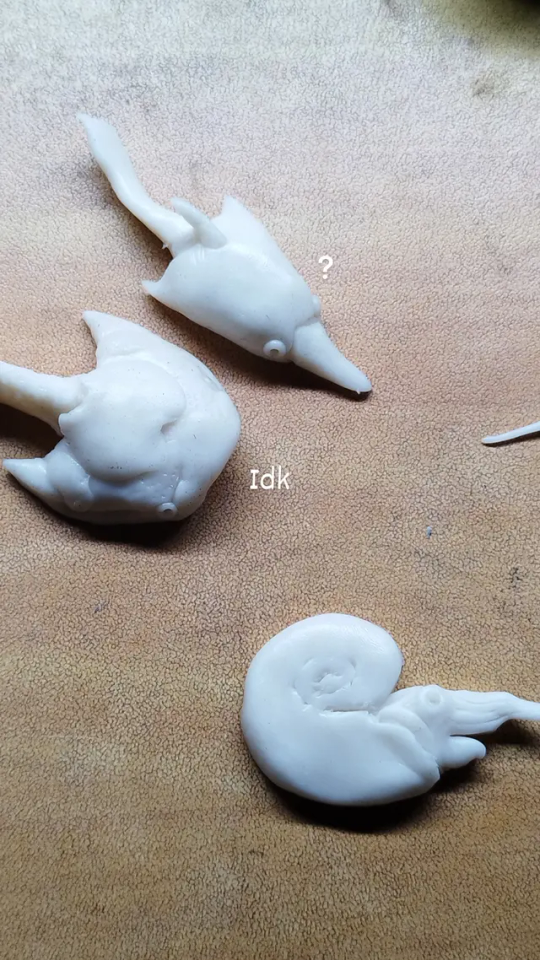
Some clay El wiwis
171 notes
·
View notes
Photo

These fossilized lamprey hatchlings disprove an age-old evolutionary theory
Lampreys were thought of as models of early vertebrate evolution, but new evidence suggests otherwise.
For more than a hundred years, evolutionary biologists suspected that the lamprey, a jawless, eel-shaped, blood-sucking fish, was the closest living model of the very first vertebrates.
The lamprey is one of a handful of animals that exist on the boundary between vertebrates and our invertebrate forebears.
Adult lampreys have a spinal column and swim through the water in search of fish, which they latch onto and bleed out with a tooth-filled mouth. But “the early phase of their life is entirely different and preposterous,” says Tetsuto Miyashita, a vertebrate paleontologist at the Canadian Museum of Nature.
Larval lampreys live like sea anemones, spending the first two to seven years of their lives buried in streambeds, filtering food out of the water with toothless, muscular throats. Because of that close resemblance to invertebrates, lampreys have long been treated as a model for the earliest vertebrates–not exactly our ancestors, but dopplegangers.
“Here’s a primordial-looking animal that transformed from this supposedly primitive state,” Miyashita explains. “It seemed like an analogue for what must have happened in an early stage of evolution. It’s a very convenient story.”
But research on new fossils of Paleozoic lamprey larvae, published Wednesday in the journal Nature, have turned that story upside down.
“It was very clear to me, like that morning icicle hanging off my roof right there, that we turned over a 150 year old evolutionary theory,” says Miyashita, who was a lead author on the research.
Read more: https://www.popsci.com/story/animals/lamprey-fish-evolution
#evolution#vertebrates#lamprey#agnatha#jawless fish#fish#animals#nature#science#prehistoric#fossils#ocean#aquatic#marine biology
433 notes
·
View notes

